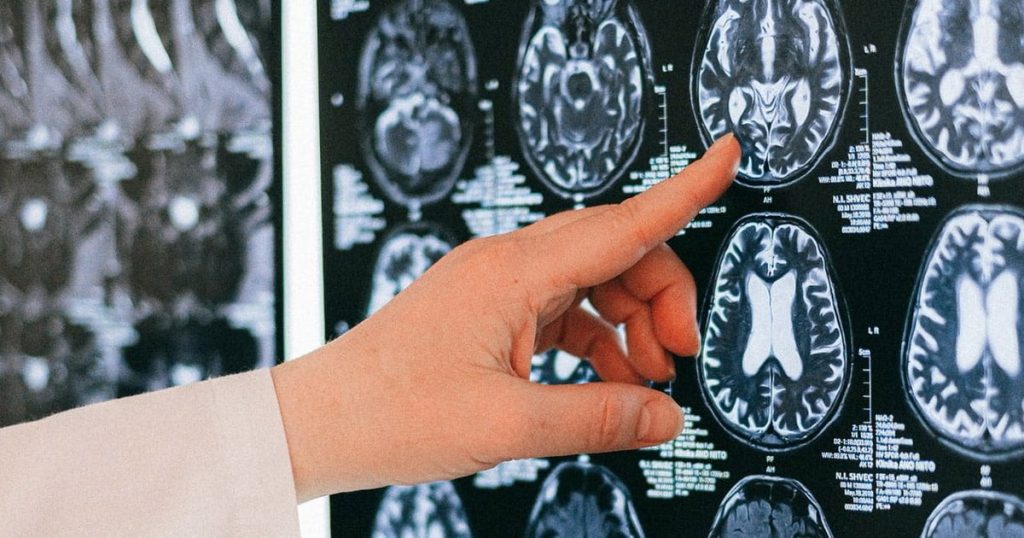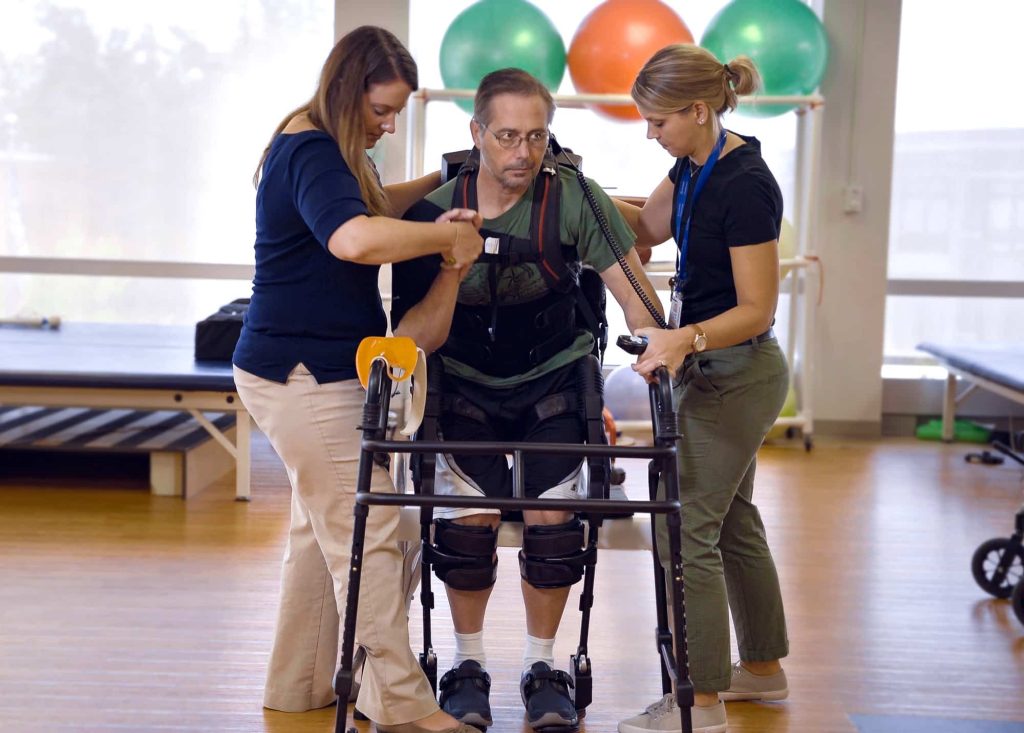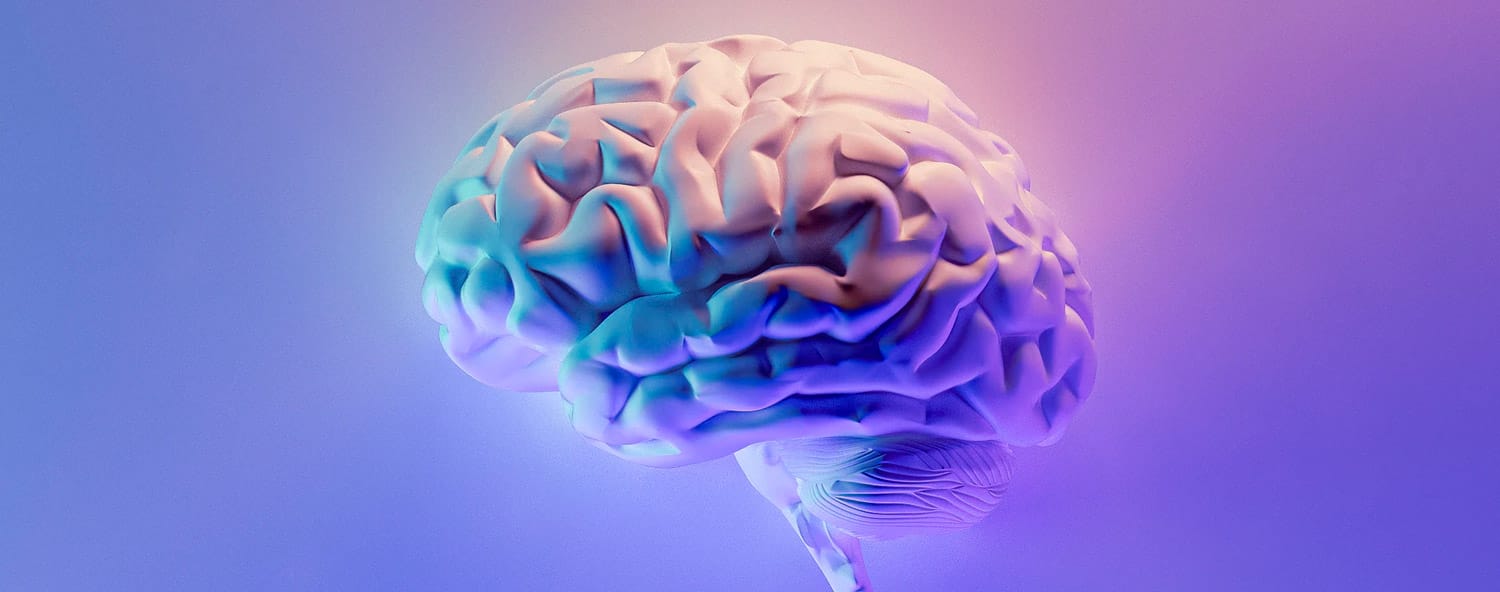Rehabilitation for brain injury depends on a thorough understanding of the neural damage involved. All traumatic brain injuries are ABIs, but not all ABIs are traumatic. Read on to find out what that means, and learn how our FDA-cleared EksoNR© robotic exoskeleton can help with recovery.
What Is an Acquired Brain Injury?
The Brain Injury Association of America defines an acquired brain injury as one that is “not hereditary, congenital, degenerative, or induced by birth trauma.” The injury changes the way neurons in the brain activate, ultimately altering the structure and function of brain cells.
ABIs can be traumatic or non-traumatic. The distinction is the cause of damage and whether it comes from inside or outside the body.

Traumatic Brain Injuries
A traumatic brain injury is a change in brain function due to an external force. An estimated 5.3 million people in the U.S. live with TBI-induced long-term disability, and up to 90,000 people join that cohort every year. The leading causes of TBI are:
- Motor vehicle accidents
- Suicidal attempts
- Gun assaults
- Falls
A TBI may develop from either a closed or open head injury or brain movement inside the skull.
An open injury penetrates the dura mater, the outermost membrane surrounding the brain and spinal cord. The penetrating object may be an external projectile or a broken piece of skull that enters the brain due to impact.
Closed (non-penetrating) injuries damage the brain without penetration of the skull or dura mater. These injuries can lead to dangerous intracranial pressure as the brain swells without room to expand. This swelling can cause further brain damage and increase the TBI’s severity.
A TBI may also develop if an incident jostles the brain within the skull. This is called traumatic inertial or non-contact injury. Falls, car accidents, and sports injuries are common causes of traumatic inertial injury.
Non-Traumatic Brain Injuries
Non-traumatic brain injuries develop due to internal processes. Some arise suddenly, as in the case of oxygen deprivation. Others develop gradually due to illness or prolonged toxin exposure. Causes of non-traumatic brain injuries include:
- Stroke
- Aneurysm
- Brain tumor
- Infectious disease (encephalitis, meningitis, and others)
- Near-drowning
- Ongoing substance abuse

Effects of Acquired Brain Injuries
The effects of an ABI, whether traumatic or non-traumatic, depend on the brain damage’s location and severity. Many ABIs affect multiple body systems, including:
- Thinking and behavior
- Speech
- Sensory abilities
- Perception
ABIs, including TBIs, often result in impairments to a person’s mobility and activities of daily living. Recovery can be a long journey for patients and their family members, but our EksoNR exoskeleton for patients who have lost mobility or function can help many patients recover more completely.
Rehabilitation for Brain Injury
Treatment for an acquired brain injury can begin as soon as a medical professional has diagnosed the extent and effects of the illness or injury. Diagnosis typically involves scanning technology like computed tomography (CT) and magnetic resonance imaging (MRI).
Once the care team has confirmed the person to be medically stable, their rehabilitation can begin. Rehabilitation for brain injury involves some to all of the following components:
- Physical therapy
- Occupational therapy
- Speech-language therapy
- Neuropsychology
The goal is to help the person regain as many lost abilities as possible. EksoNR fits into the physical therapy aspect of rehabilitation.
EksoNR Robotic Exoskeleton
EksoNR helps people with ABI retrain their muscles and start walking again, using the power of brain plasticity. It’s the first and only wearable robotic skeleton to receive FDA clearance for ABI rehabilitation.
To use EksoNR, the patient wears a “backpack” supporting their torso connected to a robotic leg-support structure. The structure attaches comfortably to the patient’s waist, hips, legs, and feet, supporting their weight and joints. While wearing our robotic legs and following PT guidance, patients with ABI can work on vital skills like:
- Orientation to midline
- Weight shit
- Stepping quality
- Lower extremity muscle strength
The system features smart data capture and clinician controls so that medical professionals can customize their sessions to patient needs in real-time.
Physical therapists and other clinicians can use EksoNR at any stage of inpatient or outpatient rehabilitation. It can help someone stand up for the first time and take their first steps after ABI.
As a person learns to walk again, EksoNR retrains their brain and muscles. It can also help someone with fine-tuning their walking skills, as they learn to regulate their movements and improve gait quality.
